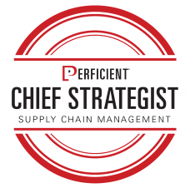To successfully address supply chain trends, it is critical that the foundational aspects of your existing supply chain are operating effectively. We recommend evaluating the maturity of the following key supply chain components before attempting to use the latest technologies.
SUPPLY CHAIN DATA GOVERNANCE (BLOCKCHAIN, ADVANCED ANALYTICS)
- Data integrity is the key to supporting transformational technologies such as blockchain and advanced analytics. There must be a single source of the truth for each data point. Through governance, data should be cleansed, and control processes should be continuously followed to maintain data integrity.
- Establish a clear and implementable data governance model that guides how your supplier, parts, production, and customer data is captured, maintained, and secured in your systems.
- Coordinate supply chain data with the overall enterprise governance model to ensure that new partners or products follow company standards.
- Accessible dashboards and shared reporting tools provide insight into integrated systems, data warehouses, inventory, etc. Materials should be in the right place at the right time
VISIBILITY AND TRACKING (IoT, BLOCKCHAIN)
- Have a strong understanding of how product moves through the supply chain and visibility to where it ends up is necessary before trying to integrate new technologies.
- Develop a plan for the data that will be captured by new technologies.
- Maintain solutions that work to meet your compliance goals. This is made easier when time is spent in the field with the personnel who enter the data to understand how solutions impact their jobs. (e.g., mobility, scanning, RFID).
- Take advantage of what your partners are generating. There are many mature partner data sources that companies frequently are not integrating into their data sets. (i.e., advanced ship notices and proof of delivery).
- Listen to the people entering your data. A review of processes and procedures can frequently identify gaps in data capture that can be easily fixed.
STANDARDS AND BUSINESS RULES (PERFECT ORDER)
- Evaluate your purchase-to-pay process to enable a repeatable and reliable fulfillment model.
- Business need to run based on the policies and standards that are established by leadership. These standards need to cascade through your business rules that drive systems configurations, process flows, and workflows.
- Everyone must understand the end-to-end process – not just their individual steps in the process. Shortcuts in one step of the process often cause increased workload on downstream steps.
EMPOWER YOUR EXPERTS (S&OP, ADVANCED ANALYTICS)
- Implement repeatable and standardized processes and tools across the planning group to allow your experts to spend their time utilizing their skills instead of executing the process.
- Make clean data available. We often hear that planning organizations spend over half of their planning cycle just getting data clean and consolidated to get to a forecast. This leaves no time to think it through to provide the best plan for the company.
- Eliminate silos across departments to ensure that planners have the information they need to be successful. This is the foundation of S&OP, but before you can effectively run, you must “talk.” Improve communication channels, ensuring planner access to key organizations is in the S&OP process.
PROCESS COMPLIANCE (ARTIFICIAL INTELLIGENCE, ROBOTICS)
- Adding technology to automate or facilitate a process could prove to be costly if there is not a full understanding of the current state. Spend time on whiteboards envisioning these processes before technology begins to play an even bigger role.
- Determine where your gaps exist and the opportunities for improvement.
- Engage your team. Solicit opinions, and listen to their challenges. While technology can facilitate a process, a quick process change could provide a significant portion of the efficiency gains targeted by automation.
METRICS (ADVANCED ANALYTICS)
- Everyone wants to use advanced analytics, but frequently it’s without agreed-upon metrics to ensure you’re measuring the right thing.
- Challenge the standard metrics. Are old industry standards right for your company today?
- Make sure you have the right data to support your metrics.
- Once you define your metrics, set a baseline and then continually manage to the metrics to drive behavior.
We recently published a guide that explores these six leading trends in supply chain, as well as the importance of having a strong foundation to support them. You can download it by clicking here or filling out the form below.


